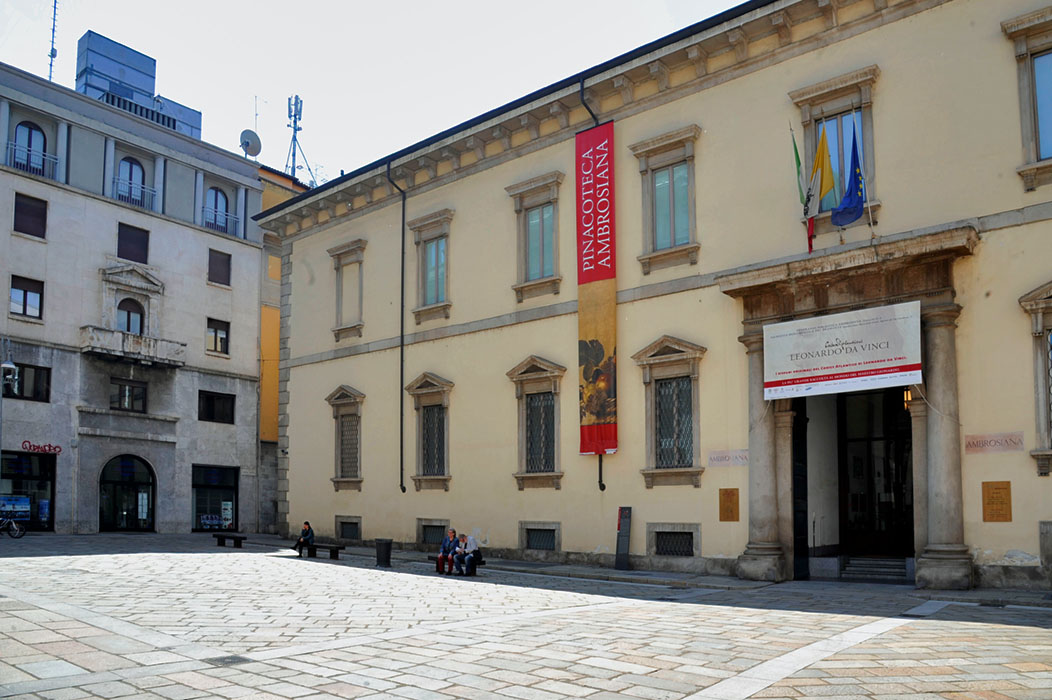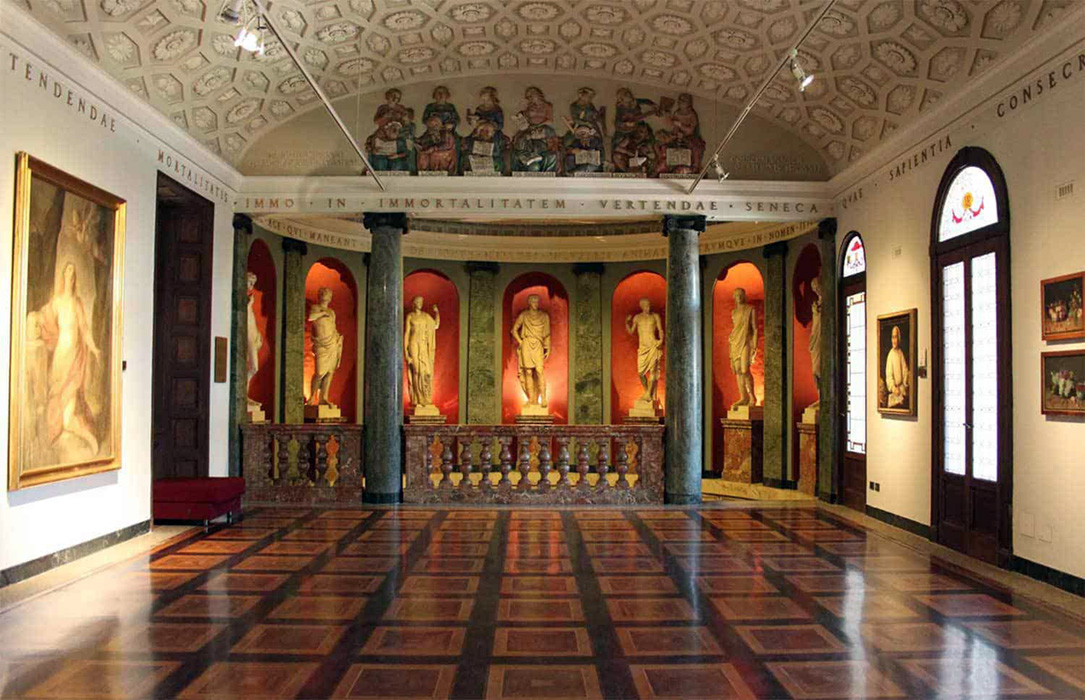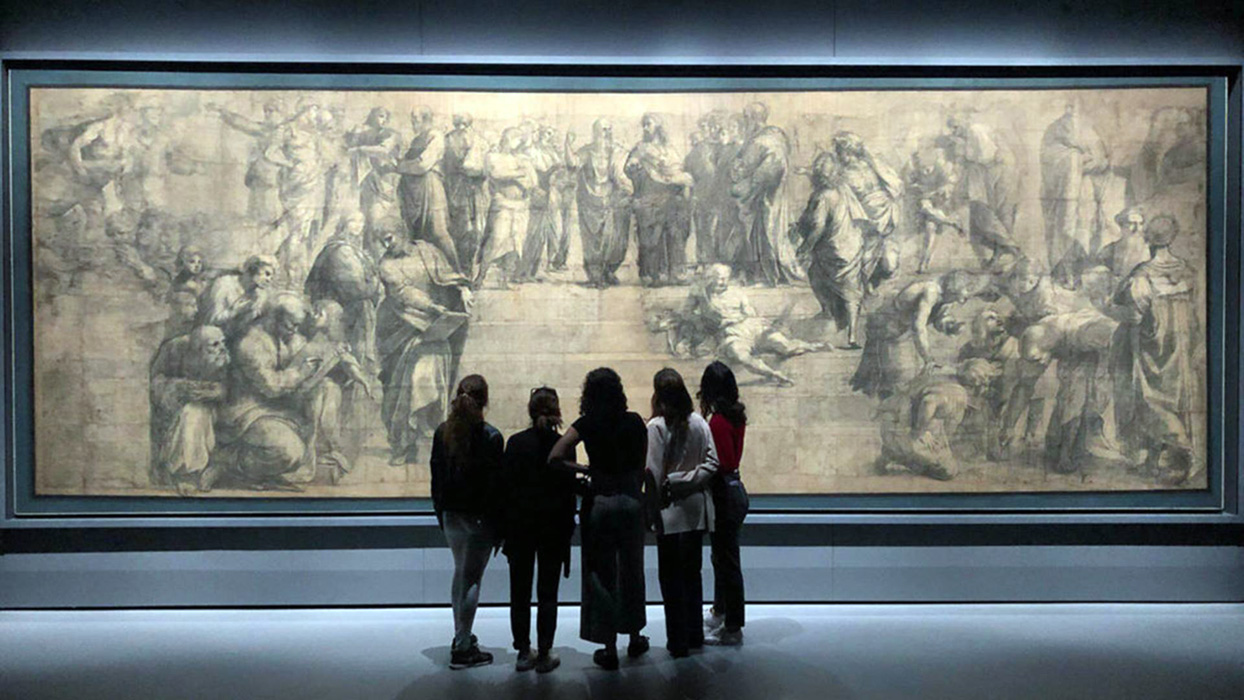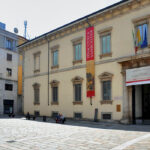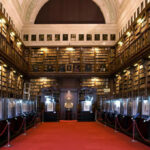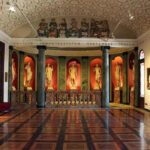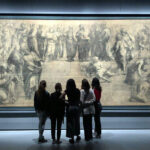Milan – The Pinacoteca Ambrosiana
The Ambrosian Art Gallery was established in April 1618, when Cardinal Federico Borromeo donated his collection of paintings, statues, and drawings to the Ambrosian Library, which he had founded himself in 1607. The institution was created to provide free cultural education to anyone with artistic or intellectual qualities. In fact, an academy of painting and sculpture was established alongside the Art Gallery in 1621, with plaster casts of the Laocoön and Michelangelo Buonarroti’s Pietà from Leone Leoni’s collection. Cerano was the first painting teacher, and the only significant pupil was Daniele Crespi.
A “Second Ambrosian Academy,” reformed in a classicist sense at the urging of painter Antonio Busca and sculptor Dionigi Bussola, was active between 1668 and the end of the 18th century. It was also closed due to the establishment of the Brera Academy of Fine Arts in 1776, which was endowed with far more resources and chairs thanks to the patronage of Empress Maria Theresa of Austria.
The Ambrosian Library and Art Gallery are closely connected. The former also collected a series of paintings with scholars and experts of the classical world and Christian culture and contained drawings and illuminated manuscripts: in 1637, Galeazzo Arconati donated the manuscripts of Leonardo to the Institut de France (currently, after Napoleon’s looting, only the Codex Atlanticus remains on site). Another treasure of the Library is the manuscript of Virgil’s work that once belonged to Petrarch (and was glossed by him) with a miniature by Simone Martini.
Within the Art Gallery’s exhibition path, which is divided into 24 rooms, visitors can admire some of the most extraordinary masterpieces of all time, such as Leonardo’s Musician, Caravaggio’s Basket of Fruit, Raphael’s preparatory cartoon for the School of Athens, Tiziano’s Adoration of the Magi, Botticelli’s Madonna of the Pavilion, and Jan Brueghel’s splendid flower vases. In addition to Renaissance-era works, the museum’s collections include important authors of Lombard Baroque (Morazzone, Giulio Cesare Procaccini, Daniele Crespi, and Carlo Francesco Nuvolone), the 18th century (Giandomenico Tiepolo, Fra Galgario, Francesco Londonio), and a significant group of authors from the 19th and early 20th centuries (Andrea Appiani, Francesco Hayez, Mosè Bianchi, Emilio Longoni, and more).

